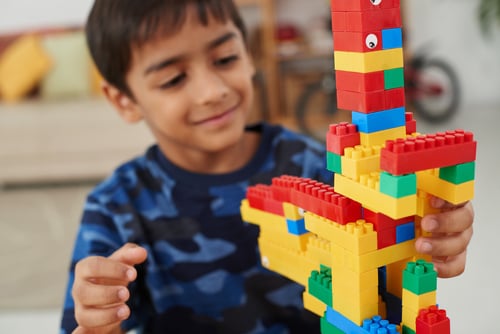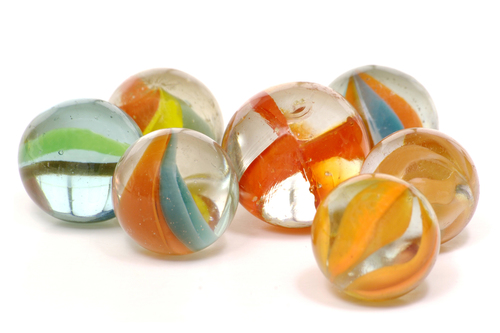Activity
Design Challenge: Making a Catapult
In this activity, your child will be challenged to use simple materials to create a catapult for a small, lightweight toy. This prompt is intentionally open-ended so that your child can be creative about how they use the materials.
The purpose of this activity, like many design challenges, is for your child to gradually develop skills of persistence and resilience. We have given instructions that you can use to guide your child through each step of the design thinking process. These steps include brainstorming, designing, testing, reflecting, and modifying. Feel free to go beyond what we have written, and have fun with this activity!
This activity is aligned to the following NGSS: K-2-ETS1-1, K-2-ETS1-2, K-2-ETS1-3.
What You Need:
- Craft sticks
- Rubber bands
- One plastic spoon
- A small, lightweight toy
- Pencil and paper for brainstorming
What You Do:
- First, explain this challenge to your child. Tell them that the purpose of this activity is for them to come up with a creative way to use craft sticks, rubber bands, and a spoon to create a catapult for their small, lightweight toy.
- Mention that there isn’t only one way to go about this challenge. It’s open-ended, and your child should know that they can come up with several different ideas.
- Once your child has a clear understanding of the prompt, it’s time for them to brainstorm different ways they can use their materials. Feel free to show your child the materials you’re providing, but don’t let them start building quite yet.
- Ask your child to draw or write their ideas on a piece of paper so that they can refer back to them. Alternatively, you can ask your child to explain their ideas to you while you draw or write them on a piece of paper.
- After your child has brainstormed for a few minutes, ask them to choose the design they think will work best.
- This is an important step of the design thinking process because it teaches your child to prioritize the functionality of their design over their personal preferences.
- Now that your child has decided which design they think will work best, allow them to start building! In order to develop resilience, it’s important that your child learns to work through challenges independently. However, depending on the needs of your child, you may need to assist them as they put their prototype (design) together.
- After your child has finished building their prototype, it’s time to test it out! Allow them to try launching their small, lightweight toy and observe the process.
- If the catapult successfully launches the toy, congratulate your child on their success.
- If the prototype doesn’t work, make sure your child doesn’t feel discouraged. Encourage your child to identify why their design didn’t work, and help them modify their design to create a better one. Before your child starts over, you may want to ask them the following questions: “What worked with your design? What didn’t work with your design? Which part of your design do you think you should change next time?”
- Continue repeating this process until your child has created a catapult they are proud of!
- In order to have your child reflect on the design thinking process, ask them some of the following questions:
- What was the best part about your final design?
- What could you have improved in your final design?
- What was the most challenging part of this activity?
- What did you learn?
Related learning resources













